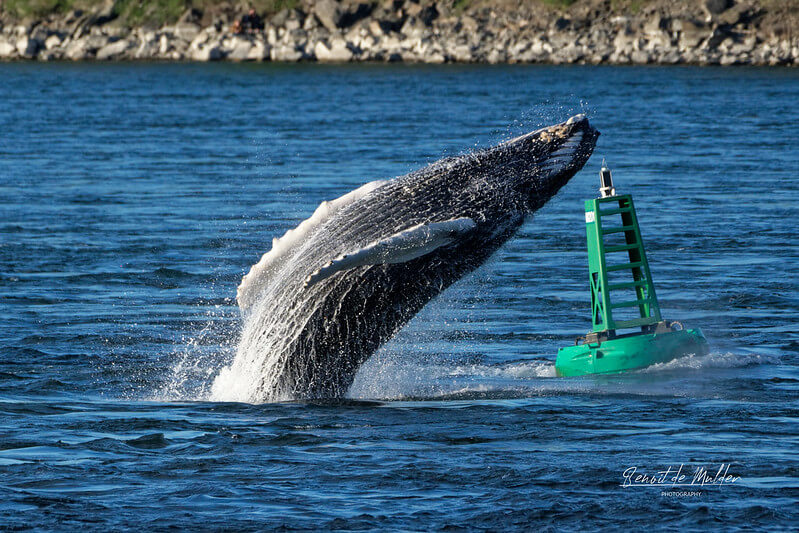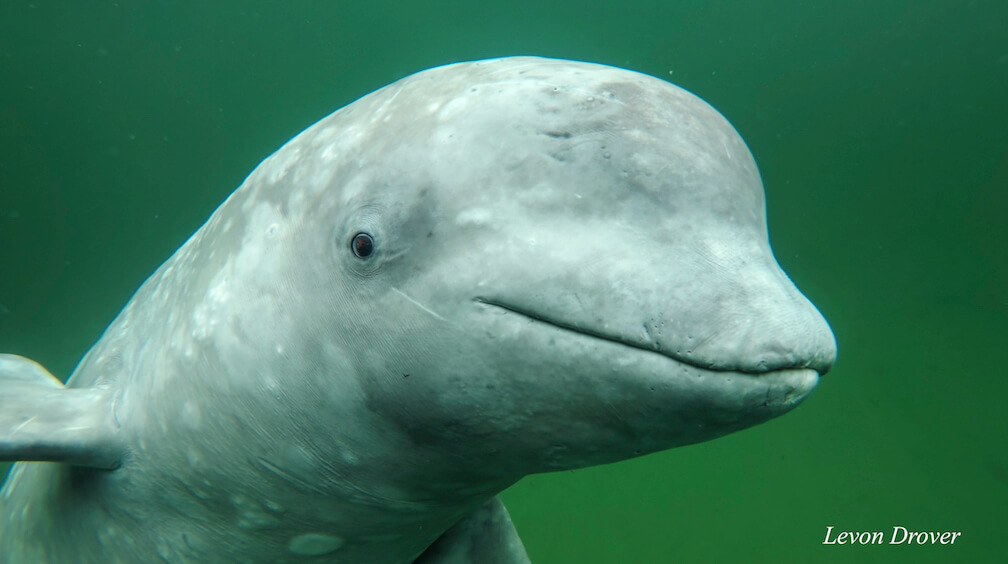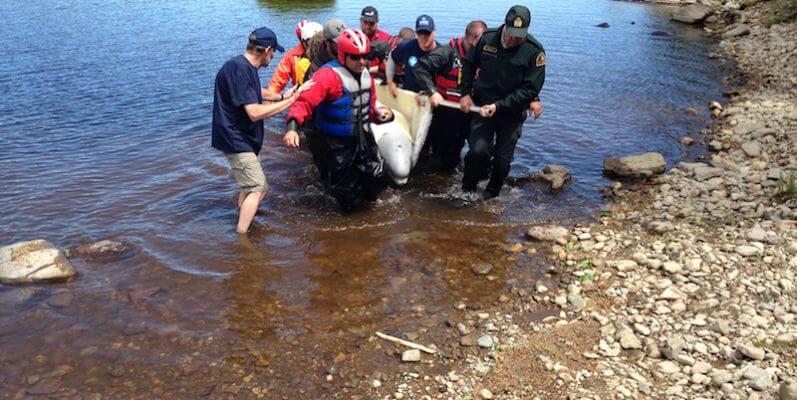Every so often, a solitary whale makes headlines. It might be a beluga seen off the coast San Diego, California, a humpback whale breaching in the port of Montréal, or a killer whale wandering in the Mediterranean. What these animals have in common is that they have all wound up in an unexpected place, be it a region or a river outside their usual range. They provide a diversion to residents, but also raise concern. Are these geographically off-course whales lost, wandering or exploring? Are they in danger? What if, after all, their presence wasn’t actually all that surprising?
Extraordinarily ordinary
When a Californian ferry captain comes face to face with a beluga from the Arctic, the news inevitably makes a splash. Both the local media and the public go a bit crazy. This is absolutely unheard of, or so it seems. However, when we search the international press over the span of a few years, we realize that, on a global scale, this is a frequent phenomenon, and that the San Diego beluga is not the first cetacean to embark on such a wild adventure.
In 2005, Hélis, a beluga from the St. Lawrence, was spotted in the Delaware River, New Jersey (US), 200 km from the Atlantic coast and, more importantly, 2,000 km south of its usual range! As for Benny, a beluga probably from the Arctic, it became a local celebrity by spending a few weeks in the Thames River in Gravesend, England in the fall of 2018. In Quebec, there was the “stray” beluga in the port of Montréal in 2012, and Népi, another white whale trapped in New Brunswick’s Népisiguit River in 2017.
As for baleen whales, there are also some “lost” celebrities, such as the humpback whale Humphrey, which entered San Francisco Bay on two occasions, and the mother-calf duo Delta and Dawn, which swam more than 170 km up California’s Sacramento River (US). And these are far from the only such cases.
A faulty “compass”?
But what might take a beluga 2,000 km from its usual range? Exploratory behaviour, a change in the distribution of its prey, disorientation: there are many theories, but it is possible that it is actually a combination of multiple factors.
In some cases, the animal appears to be sick or injured. Its internal navigation system may then be dysfunctional, or it may be seeking refuge in a port or estuary. On July 4, 2020, a rare Sowerby’s beaked whale ends up in Wicklow Harbour, Ireland. She is visibly in poor shape and the Irish Whale and Dolphin Group suspects an acoustic trauma that probably disoriented her.
A few weeks earlier, a very young fin whale was stranded alive twice in England’s Dee Estuary. After being returned to the water each time, the exhausted and malnourished animal would eventually run aground a third and last time before perishing.
The origin of these disorientations is a subject of interest to scientists. It is already known that solar storms and military sonar can disturb whales and trigger mass strandings. But what about high tides, underwater drilling, shipping channels, the effects of the moon or magnetic variations? And, can cetaceans simply “get lost” by taking the wrong path, as can sometimes happen to us humans?
Young and wild and free
In the case of the apparently healthy San Diego beluga, the answer may lie elsewhere. In dolphins and belugas, whose social structure is of the “fission-fusion” type, group compositions are constantly changing. When an individual decides to leave its group to join another one, its journey can take it much farther than expected, especially when the population in question is geographically isolated (as in the case of the St. Lawrence beluga or certain dolphins in the Mediterranean). Perhaps this explains why toothed whales represent the overwhelming majority of vagrant cetaceans.
In baleen whales, wandering individuals are often relatively young. This is the case, for example, with the Montréal humpback, which was only 2 or 3 years old. Young age might explain navigation errors or even exploratory behaviour. In many aquatic and terrestrial species – including humans! – young individuals are more likely to venture out and explore new territories in search of food or exotic members of their own species.
Dangers of tides and solitude
Sometimes, exploring is a success. Take for example Mogul, the North Atlantic right whale that came to feed along the French coasts before returning to the western Atlantic, or the narwhal that has been observed every year since 2016 in the St. Lawrence in the company of belugas. Unfortunately, these wanderings also imply risk. “When you see an animal so far from its usual habitat, the prognosis is never very good,” summarizes Robert Michaud, scientific director at the Group for Research and Education on Marine Mammals (GREMM) and coordinator for the Quebec Marine Mammal Emergency Response Network.
The biggest issue lies in swimming up rivers or estuaries during high tide. When the tide recedes, the animal finds itself trapped. If it manages not to run aground, it can still get “stuck” in freshwater, sometimes without food. Whales that venture into ports, estuaries and rivers are also statistically more likely to be struck by a ship.
“In whales that typically live in groups such as belugas, there is also the socialization issue,” continues Robert Michaud. Some belugas seek to compensate for the lack of social relations, and can befriend a boat, a buoy or even a dog.” Unfortunately, this attachment increases their presence in the port and the risk of malnutrition and collision.
Stubborn as a beluga
But how do you get across to a cetacean that weighs several tonnes that it is on the wrong path? Even with the best intentions in the world, interventions are not always straightforward or without risk. Following the humpback whale’s visit to Montréal in May 2020, Robert Michaud explained at length during an online conference (in French) how response decisions might be made when dealing with an apparently healthy vagrant.
In 2017, a large-scale operation was launched to help Népi, the beluga trapped in a New Brunswick river. The animal is captured, transported by plane and then reintroduced into the St. Lawrence Estuary in the hope that it will integrate with a group of its own species and thus contribute to the recovery of the St. Lawrence beluga population. All for naught! Népi was seen again in Nova Scotia the following summer, this time with another beluga, and a few months later in Prince Edward Island, where it interacted with a group of divers. It all goes to show that in some individuals, the pioneering spirit is difficult to quell.
Beluga spies on the run
Sometimes, the presence of a cetacean in an unusual place… has an unusual origin! In January 1992, a beluga showed up at a Turkish fishing port on the Black Sea, where it begged for food. This particularly friendly beluga leaves local fishermen dumbstruck and is quickly nicknamed Aydin (“enlightened” in Turkish) by the media. It soon turns out that this beluga, trained as part of a Russian spy program, escaped from a military base in Crimea during a storm. This is the beginning of a series of political moves that result in the animal being recaptured, only to escape once more.
A few years later, another lone beluga amazes observers with its familiar behaviour (following boats, retrieving balls, etc.). First spotted with a camera harness in April 2019 in northern Norway, the beluga, ironically nicknamed Hvladimir, is also suspected of being a former Russian spy on the run. For the time being, authorities are denying this accusation and the cetacean continues to entertain Hammerfest residents. Unfortunately, this individual suffered a collision and its prospects for survival are not good.
Learn more
- Les bélugas ou l'adieu aux baleines, Pierre Béland, Libre expression, avril 1996











